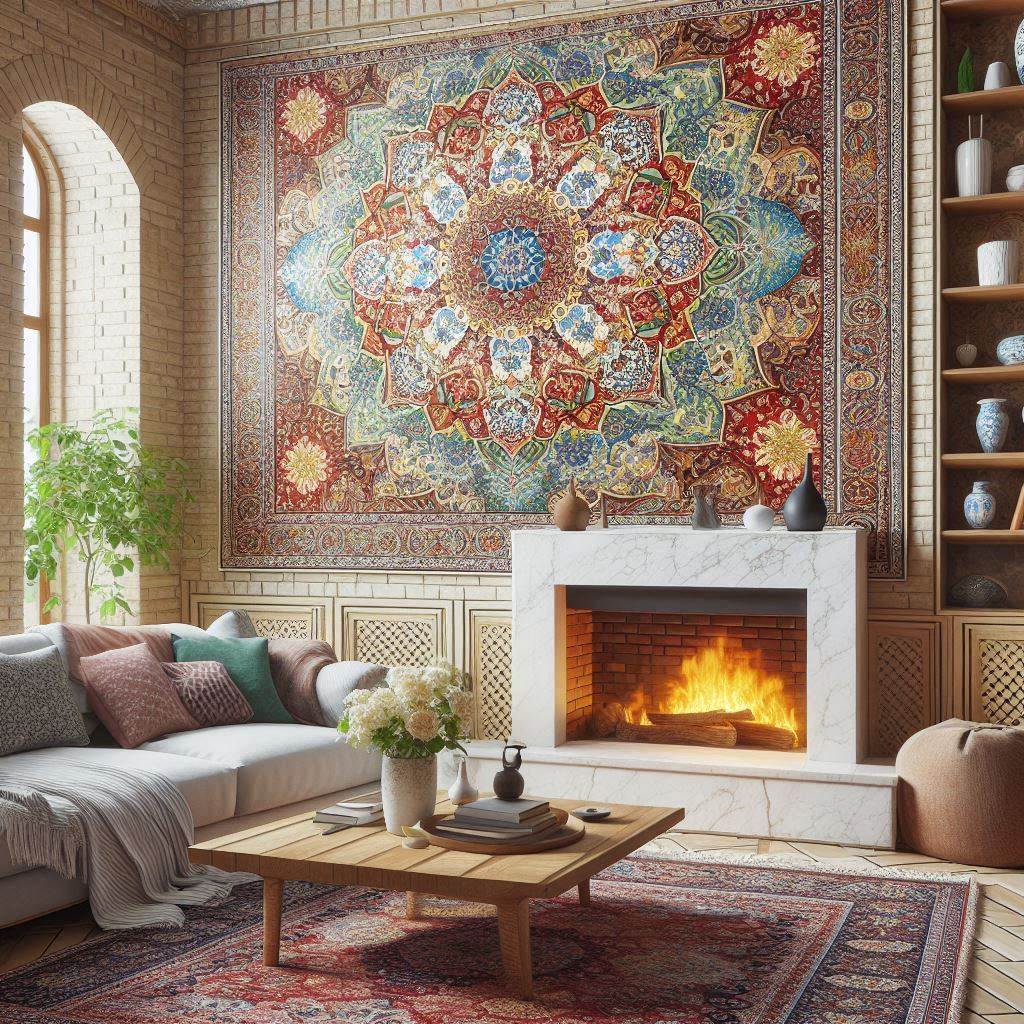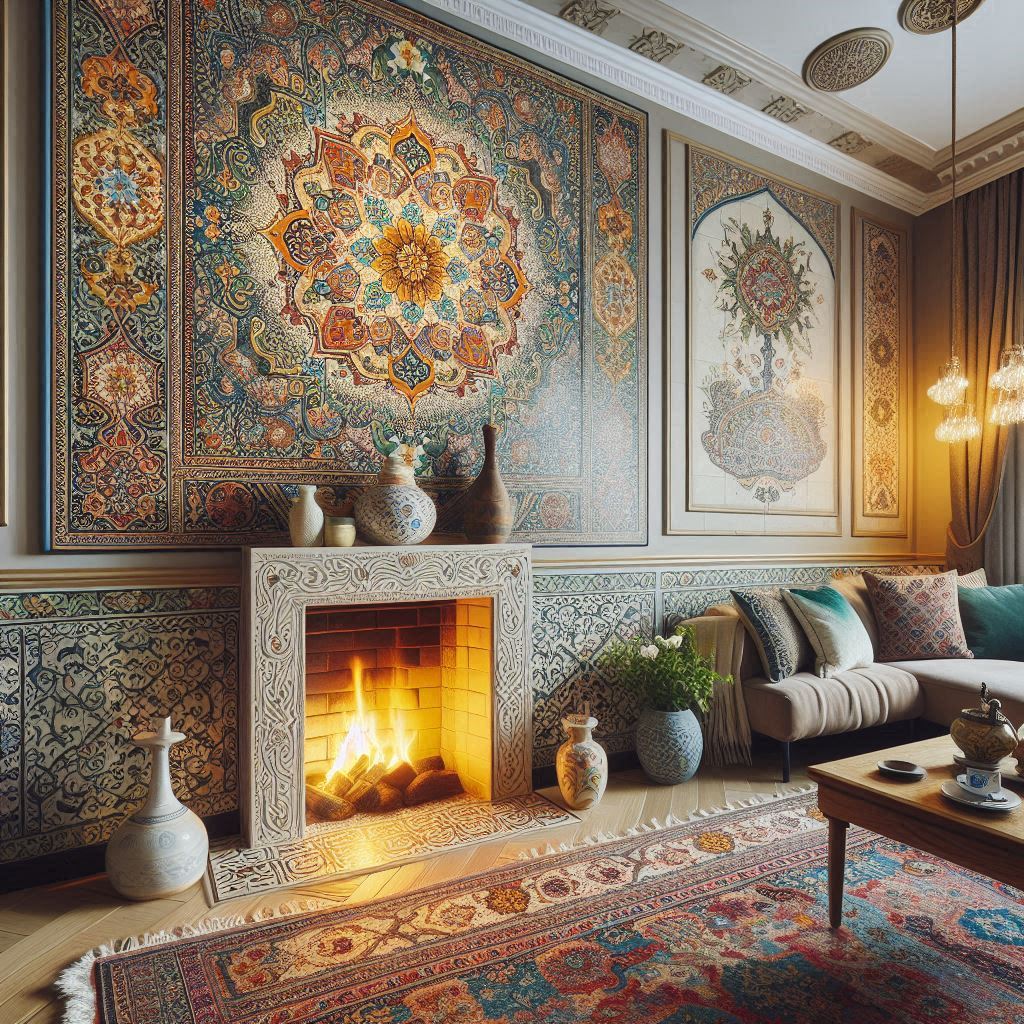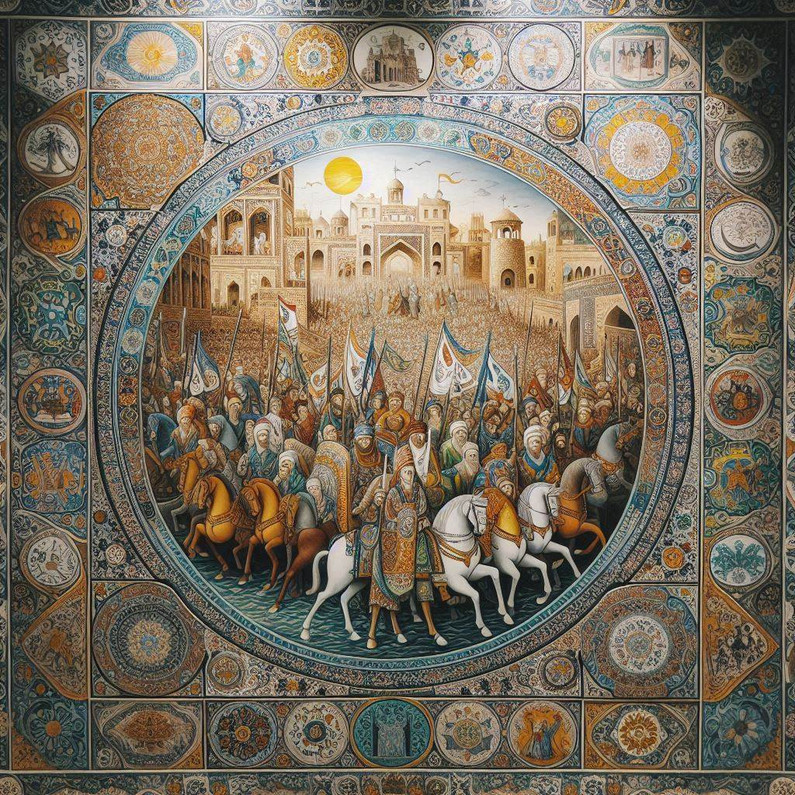The Art and History of Persian Tile , Wall decor Tiles
The Art and History of Persian Tile
Persian tiles, renowned for their intricate designs and vibrant colors, are a quintessential element of Persian architecture and decorative arts. This centuries-old tradition reflects the rich cultural heritage, artistic ingenuity, and sophisticated craftsmanship of Iran, historically known as Persia. From the grandiose mosques of Isfahan to the ornate palaces of Shiraz, Persian tiles adorn many of the region's most iconic structures, offering a glimpse into the aesthetic and cultural values of different Persian dynasties.
Historical Background
The history of Persian tile making dates back to at least the 13th century, although evidence suggests that the use of glazed bricks and tiles in Iran may have started as early as the 12th century BCE. The art form reached its zenith during the Safavid dynasty (1501-1736), a period often regarded as a renaissance in Persian art and culture. Under the patronage of Safavid rulers, particularly Shah Abbas I, tile making flourished, and cities like Isfahan became centers of architectural and artistic innovation.
Techniques and Materials
Persian tile making involves a variety of techniques and materials, each contributing to the unique aesthetics of the tiles. The most commonly used materials include clay, silica, and various metal oxides for glazing. The process typically begins with the shaping and firing of clay tiles, followed by the application of intricate designs using mineral-based glazes. These glazes, often made from a combination of quartz, feldspar, and metal oxides, produce the vibrant blues, turquoises, and other colors characteristic of Persian tiles. The main techniques used in Persian tile making include:

1. **Cuerda Seca**:
This technique involves outlining designs with a waxy substance that prevents the mixing of different glazes during firing. This method is known for producing tiles with sharp, defined lines and vibrant colors.
2. **Lusterware**:
A more complex technique, lusterware involves applying a metallic glaze to tiles, resulting in a shimmering, iridescent surface. This method was particularly popular during the Seljuk and Ilkhanid periods.
3. **Mosaic Faience**:
This involves cutting tiles into small pieces and assembling them to create intricate geometric and floral patterns. Mosaic faience is often used in the decoration of domes, minarets, and walls of mosques.
Iconic Examples
Persian tiles can be found in many historic structures across Iran, each showcasing the regional variations and historical evolution of this art form. Some of the most notable examples include:
**Shah Mosque in Isfahan**:
This Safavid-era mosque is adorned with stunning blue and turquoise tiles, arranged in intricate geometric and floral patterns. The mosque's dome and minarets are particularly noteworthy for their tile work.
**Nasir al-Mulk Mosque in Shiraz**:
Known as the "Pink Mosque," this late 19th-century structure features a unique blend of traditional Persian tile work and Qajar-era motifs. The mosque's interior is famous for its stained glass windows and the vibrant pink tiles that cover its walls and ceilings.
**Golestan Palace in Tehran**:
This opulent palace complex, a UNESCO World Heritage site, showcases a variety of Persian tile styles, from the delicate floral designs of the Qajar period to the bold, colorful patterns of earlier dynasties.

Cultural Significance
Beyond their aesthetic appeal, Persian tiles carry deep cultural and symbolic meanings. The intricate patterns often incorporate elements of Islamic art, such as calligraphy and arabesques, reflecting the spiritual and philosophical principles of Islam. Geometric patterns, for instance, symbolize the infinite nature of creation and the unity of God, while floral motifs often represent paradise and divine beauty. Persian tiles also serve a practical purpose, protecting buildings from the harsh climate and contributing to their durability and thermal insulation. This combination of functionality and beauty exemplifies the Persian approach to art and architecture, where form and function are seamlessly integrated.
Contemporary Revival
In recent years, there has been a renewed interest in Persian tile making, both within Iran and internationally. Contemporary artisans and designers are reviving traditional techniques while also experimenting with new styles and materials. This resurgence not only preserves the rich heritage of Persian tiles but also introduces this timeless art form to new audiences. Institutions such as the Iranian National Museum and various cultural heritage organizations are playing a crucial role in this revival, offering workshops, exhibitions, and educational programs to promote the art of Persian tile making. Furthermore, modern architects and interior designers are increasingly incorporating Persian tiles into their projects, from luxury hotels to public spaces, thus ensuring the continued relevance and appreciation of this ancient craft.
Conclusion
Persian tiles are more than just decorative elements; they are a testament to the rich cultural heritage, artistic excellence, and enduring legacy of Persia. Through their intricate designs, vibrant colors, and symbolic meanings, these tiles offer a window into the history, spirituality, and creativity of the Persian people. As this art form continues to evolve and inspire, it remains a cherished and integral part of Iran's cultural identity.
Recent Posts
-
Sustainable Splendor: The Eco-Friendly Soul of Handcrafted Art
In an era of fast fashion and mass-produced home decor, the environmental cost of our "stuff" has ne …31st Dec 2025 -
The Art of Diplomacy: Why Handcrafted Heritage is the Language of Dubai’s Protocol
In the world of international relations and government protocol, a gift is never "just a gift." It i …31st Dec 2025 -
The Psychology of Appreciation: Using Bespoke Art to Retain Top Talent in Dubai
In the high-speed corporate environment of Dubai, where the global hunt for talent is relentless, a …31st Dec 2025



